Confined spaces are omnipresent in many industrial sectors: tanks, vats, silos, technical galleries, pipelines, tunnels and underground structures. Inspecting them is a crucial step in guaranteeing the safety, compliance and proper operation of installations. But how do you effectively inspect these inaccessible and sometimes dangerous places, without exposing operators to unnecessary risks? Thanks to the technologies developed by Multinnovtechnologies, it's finally possible to inspect the inaccessible.
In this article, we explain what a confined space is, why it's essential to inspect it regularly, and how a complete inspection is carried out, step by step, using innovative solutions such as wireless inspection robots Stereo2 and Roview2.
What is a confined space?
A confined space is a partially or totally enclosed environment, not designed for prolonged human presence, and presenting specific risks. They may be narrow, difficult to access, poorly ventilated, or likely to contain toxic gases, hazardous liquids or low oxygen levels.
These areas are typically found in the water and wastewater, chemical, petrochemical and nuclear sectors, as well as in port and food processing facilities. Examples include :
- Storage tanks,
- Agricultural or industrial silos,
- Sewers and drains,
- Tunnels and underground galleries,
- Industrial chimneys or air coolers.
Access to these environments often represents a major hazard for workers: toxic atmospheres, risk of explosion, falls, isolation... This is why human inspection is generally prohibited or strictly regulated. Technology then takes over to inspect these places without entering them.
Why inspect confined spaces?
There are several reasons for inspecting confined spaces:
Personal and infrastructure safety
Detecting advanced corrosion, cracks, leaks or obstructions helps anticipate breakdowns or serious accidents. Regular monitoring prevents potentially fatal incidents, collapses or contamination.
Compliance with regulatory standards
Numerous regulations (environmental, health, workplace safety) require periodic inspections to certify the integrity of installations. These inspections must be documented and archived.
Preventing production stoppages
A fault in a confined, hard-to-reach space can bring a production line to a complete halt. Thanks to preventive inspection, action can be taken before faults impact on operations.
Cost optimization
By regularly inspecting structures, maintenance work is more targeted, faster and therefore less costly in the long term.
How does a confined-space inspection work?
Carrying out an inspection in a confined space requires rigor, method and technology. Here are the main steps to follow.
Identify the area to be inspected
Prior to any operation, the area concerned must be precisely identified:
- What is its size, geometry and configuration?
- Do you have any previous plans or data?
- What are the risks (presence of liquid, height, gas, darkness)?
- Is it a space accessible or totally inaccessible to man?
This analysis phase enables us to map out the constraints: visibility, clutter, danger, wireless signal, etc.
Inspection planning
The next step is logistical and technical planning:
- Define inspection objectives (visual inspection, defect detection, level measurement, corrosion detection, etc.),
- Choose intervention times, taking into account environmental conditions,
- Implement safety procedures, particularly in the event of toxic gases or explosive atmospheres,
- Keep teams informed and ensure coordination between the various parties involved.
A well-prepared inspection is faster, more efficient and, above all, safer.
Choosing the right tools: technology at the heart of the process
Traditionally, confined spaces were inspected using fixed cameras or telescopic poles. Now, wireless inspection robots offer unrivalled freedom of action and capture quality. Multinnov offers two complementary solutions, designed to operate in extreme conditions.
Stereo2: the indoor drone for confined spaces
The Stereo2 is an indoor inspection drone designed to navigate without GPS, even in total darkness. It is equipped with :
- A wide-angle 4K camera for precise visual inspections,
- A stereoscopic vision stabilization system, for stable flight without external reference points,
- Ultra-powerful LED lighting (up to 10,000 lumens) to illuminate every corner,
- A protective shell to prevent shocks.
Thanks to its compact size (39 cm diameter), it can inspect vessels, tanks, galleries or narrow ducts with agility, and transmit images in real time. It's the ideal companion for inspections at height or in closed environments.
Roview2: the hybrid rolling and floating robot
The Roview2 is a wire-guided, motorized inspection robot capable of :
- On dry or damp ground,
- In pipes partially filled with water,
- On the surface of flooded basins or tunnels.
Equipped with a turret-mounted camera, it offers a panoramic view of the interior of pipes and drains. It adapts to changes in water level and moves forward without interruption thanks to its powerful propulsion. Its live transmission enables precise remote control.
Performing the inspection
The inspection is controlled by an operator from a control station. The drone or robot moves forward in the confined space, following a defined flight plan or route. The images are :
- Viewed in real time,
- Recorded for later analysis,
- Georeferenced in some cases.
This approach enables an exhaustive inspection, with no grey areas, and no danger to human teams.
Analyze results and produce a report
After the operation, the data collected (images, videos, annotations) are analyzed using software tools. The aim is to identify :
- Visible anomalies : cracks, deposits, corrosion, obstructions,
- Changes compared with previous inspections,
- Critical areas to be monitored or repaired.
A detailed inspection report is then generated. It includes :
- A summary of observations,
- Annotated screenshots,
- Recommendations for intervention or maintenance.
This report is an invaluable tool for decision-making, regulatory archiving and planning future operations.
The inspection of confined spaces is a strategic, technical and safety mission. It can no longer be envisaged without recourse to the most advanced technologies. Thanks to the solutions developed by Multinnovsolutions, manufacturers now have wireless inspection robots that are efficient, safe and perfectly adapted to these demanding environments.
Drones Stereo2 and Roview2 drones illustrate this capacity for innovation, combining performance, maneuverability and image quality. They enable rapid inspection of previously inaccessible areas, while reducing costs and human risks.
Inspecting the inaccessible is no longer a slogan: it's a technological reality brought to life by Multinnovin the service of safety and industrial efficiency.


